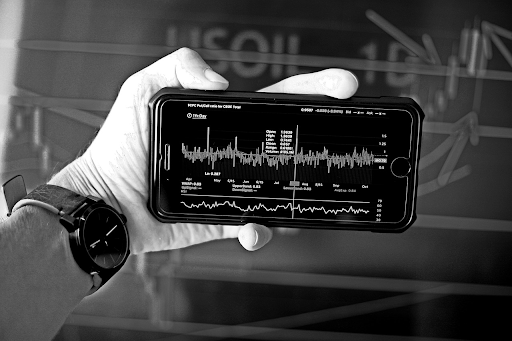
To assess the market conditions, investors are using a number of financial metrics before they invest in an asset. One such financial instrument that has proved helpful for investors in more than one respect is the Put Call Ratio. It is essential to know the basics of this financial measurement in order to gain an understanding of its application and role. To understand the basics and importance of PCR ratio, keep reading the article.
What is the PCR Ratio?
In technical analysis, the PCR ratio today is a widely used indicator to compare the volume of trades in put options and calls. It’s an indicator of market sentiment, suggesting whether most traders are expecting a decline or increase in the market.
The higher the ratio, the more put options are purchased compared to calls, which indicates fear or adverse investor sentiment. On the other hand, a low ratio suggests that call buying is predominant, reflecting optimism or a positive sentiment. This ratio is used by traders and analysts to assess the market sentiment, aligning their strategies in a way that allows for more precise forecasts of movements in the markets. However, it should be considered as part of broader analytical approaches.
Put Call Ratio Formula
The Put Call Ratio (PCR) is calculated using this formula:
PCR = Open Interest of Put Options / Open Interest of Call Options.
By comparing the open interest in put options and call options this formula helps investors assess market sentiment. A PCR above 1 indicates that more puts have been traded, suggesting a bearish market sentiment. In contrast, a PCR below 1 indicates that more calls have been exchanged, suggesting a positive market sentiment. For investors who want to assess the overall mood of the market and make informed decisions based on the prevailing sentiment, this calculation is quite essential.
Importance of Put Call Ratio
The most critical importance of PCR is:
Market sentiment indicator
PCR is a contrarian indicator, showing the prevailing mood of traders irrespective of whether they are optimistic or pessimistic about future market developments.
Sector Analysis
PCR can be used for specific sectors or stocks, providing focused information on investor expectations and enabling them to identify potential risks that may not be apparent in other market indicators.
Strategic planning
PCR is used in combination with other indicators to provide a more comprehensive view of the market, helping to determine entry and exit points for transactions.
Predictive tool
Investors can anticipate possible market reversals by identifying extremes in the PCR values. A very low PCR could indicate an overbought market ready for a retreat, while a very high PCR might indicate an oversold market prepared for a rebound.
Risk management
To assess the overall market risk, investors use this ratio to adjust their portfolio strategies in order to hedge against expected movements. Investors could be forced to take defensive positions as a result of rising PCRs.
Limitations of PCR Ratio
The significant limitations of using PCR ratio are as follows.
- Market noise
Market noise can influence short-term fluctuations in the PCR but not fundamental investor sentiment, and this may lead to misleading signals.
- Depends on market conditions
Depending on market conditions, the effectiveness of PCR as a prediction tool can differ. In stable markets, it is more reliable than in highly volatile ones.
- Interpretation challenges
It is possible to interpret PCR values subjectively. What one investor considers an extreme value signalling a market reversal, another might view as within normal range.
- Overreliance risk
It can be dangerous to rely only on PCR for investment decisions. In order to gain a complete understanding of market dynamics, it should be part of the broader set of instruments and analyses.
Conclusion
A good investment requires you to compare the current level of ratios to the average ratios over some time in a calculated way. Traders may react accordingly if the PCR suddenly spikes higher after fluctuating within a narrow range, as this could be interpreted as a significant change in negative sentiment. On the other hand, a sudden drop in this ratio can indicate a shift in investor sentiment to the upside. This ratio should be considered in the context of different market indicators. This will help investors make wise and informed choices regarding shares to buy today. You can reach out to experts at renowned firms to get useful insights which will help you in making the appropriate decisions.
Discover more from Market Business News
Subscribe to get the latest posts sent to your email.

